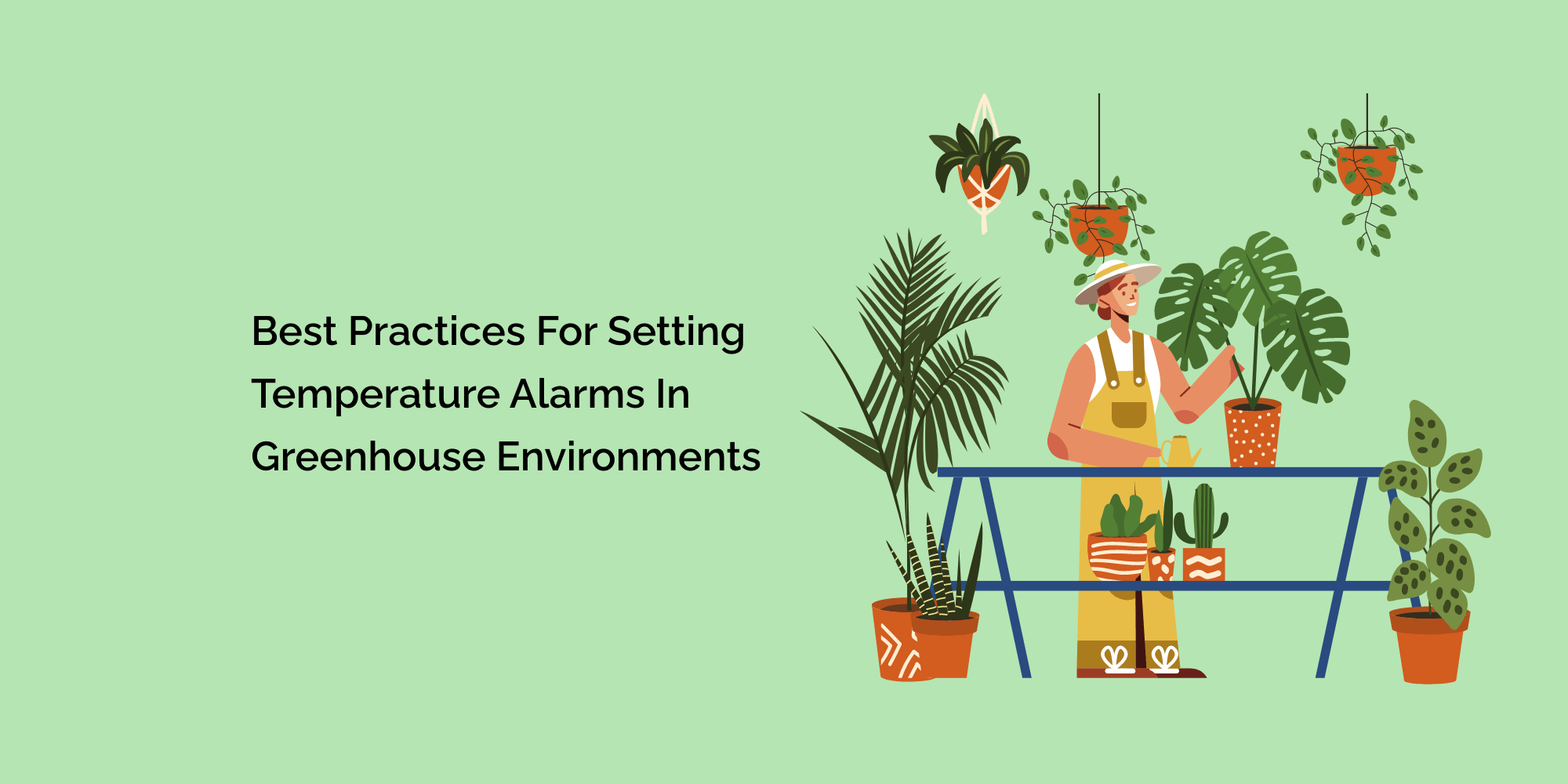Temperature control is vital in greenhouse environments to ensure optimal plant growth conditions. Setting up temperature alarms is essential to maintaining temperature stability and preventing potential damage to crops. This blog will discuss the best practices for setting temperature alarms in greenhouse environments. From determining temperature thresholds to considering crop-specific requirements, we will provide a comprehensive guide to help you make informed decisions when setting temperature alarms. Following these best practices, you can proactively monitor temperature fluctuations and take prompt action to protect your plants and maximize their growth potential.
Understand Crop Temperature Requirements
- Different crops have specific temperature requirements at various stages of growth. Understanding these requirements is crucial for setting accurate temperature thresholds. Consult crop-specific resources, scientific studies, and experts to determine the ideal temperature ranges for your plants. Consider factors such as day and night temperatures, temperature variations during different growth stages, and the potential impact of extreme temperatures on crop health.
Consider the Impact of External Factors
- In addition to crop-specific requirements, consider the impact of external factors on greenhouse temperatures. Factors such as sunlight intensity, humidity levels, ventilation, and seasonal variations can influence temperature fluctuations. Evaluate how these factors interact with your greenhouse's design and insulation to determine appropriate temperature thresholds. Regularly monitor and adjust the points to align with the prevailing conditions.
Utilize Multiple Temperature Sensors
- Using multiple temperature sensors throughout your greenhouse provides a more accurate representation of temperature variations across different zones. Place sensors strategically where temperature fluctuations are likely, or your plants may be most susceptible to temperature stress. This includes near heating or cooling systems, plant canopy levels, and areas exposed to direct sunlight. Monitoring temperatures in different zones lets you detect localized issues and take targeted corrective measures.
Regularly Calibrate Temperature Sensors
- Calibrating temperature sensors is crucial to ensure accurate temperature readings. Over time, sensors may drift, leading to inaccurate measurements. Regular calibration helps maintain the reliability of your temperature alarms. Follow the manufacturer's guidelines for calibration procedures and frequency. Consider external calibration services for the most accurate results. Calibration should be conducted at least once a year or as the sensor manufacturer recommends.
Establish Alarm Notification Protocols
- Establish clear protocols for alarm notifications to ensure timely responses to temperature deviations. Determine who will receive the alarms, how they will be notified (e.g., email, text message), and the level of urgency associated with each alarm trigger. Develop a contingency plan that outlines the steps to be taken when alarms are triggered, including adjusting environmental controls, inspecting the greenhouse, and contacting relevant personnel.
Regularly Monitor and Review Alarm Data
- Monitor the data generated by your temperature alarms regularly. This data provides valuable insights into temperature patterns, trends, and alarm triggers. Review the data to identify recurring issues, potential environmental improvements, or opportunities for optimizing temperature control systems. Periodically analyze the data to ensure the temperature thresholds and alarm settings remain effective and aligned with your crop's needs.
Regularly Maintain and Test the Alarm System
- Maintaining and testing your temperature alarm system is crucial to ensure its reliability. If applicable, perform routine checks to ensure all components function properly, including the sensors, microcontrollers, alert mechanisms, and connectivity. Replace batteries or power sources as needed. Conduct periodic tests to verify that the alarms are triggered correctly and that notifications are received promptly.
Keep Records and Document Changes
- Maintain thorough records of temperature alarms, including alarm triggers, responses, and any subsequent actions taken. Document any changes to temperature thresholds or alarm settings and the rationale behind those adjustments. This documentation is a reference for future analysis, troubleshooting, and decision-making.
Certainly! Here are some frequently asked questions (FAQs) about setting temperature alarms in greenhouse environments:
What is the purpose of setting temperature alarms in a greenhouse?
Setting temperature alarms in a greenhouse is crucial for maintaining optimal growing conditions and protecting plants from temperature fluctuations. Temperature alarms serve as early warning systems, triggering alerts when temperatures exceed or drop below-desired thresholds, allowing growers to take immediate action to mitigate potential risks.
Why is it essential to understand crop-specific temperature requirements?
Understanding crop-specific temperature requirements is essential for setting accurate temperature thresholds. Different crops have specific temperature preferences at different growth stages. Adhering to these requirements ensures optimal growth and helps prevent stress or damage caused by temperature extremes.
How should I determine the appropriate temperature thresholds for my greenhouse?
To determine temperature thresholds, consider optimal temperature ranges for your specific crops, considering factors such as day and night temperatures, growth stages, and potential impacts of external factors. It is also essential to consult experts, scientific resources, and crop-specific guidelines to ensure accurate threshold settings.
Conclusion
Setting temperature alarms in greenhouse environments is essential for maintaining optimal growing conditions and safeguarding plants from temperature fluctuations. You can establish an effective temperature alarm system by understanding crop-specific requirements, considering external factors, setting appropriate temperature thresholds, utilizing multiple sensors, and regularly monitoring and reviewing alarm data. Remember to calibrate sensors, establish notification protocols, periodically maintain and test the system, and keep detailed records. These best practices will help you proactively address temperature-related issues, ensure the health and productivity of your plants, and ultimately maximize your greenhouse's success.








